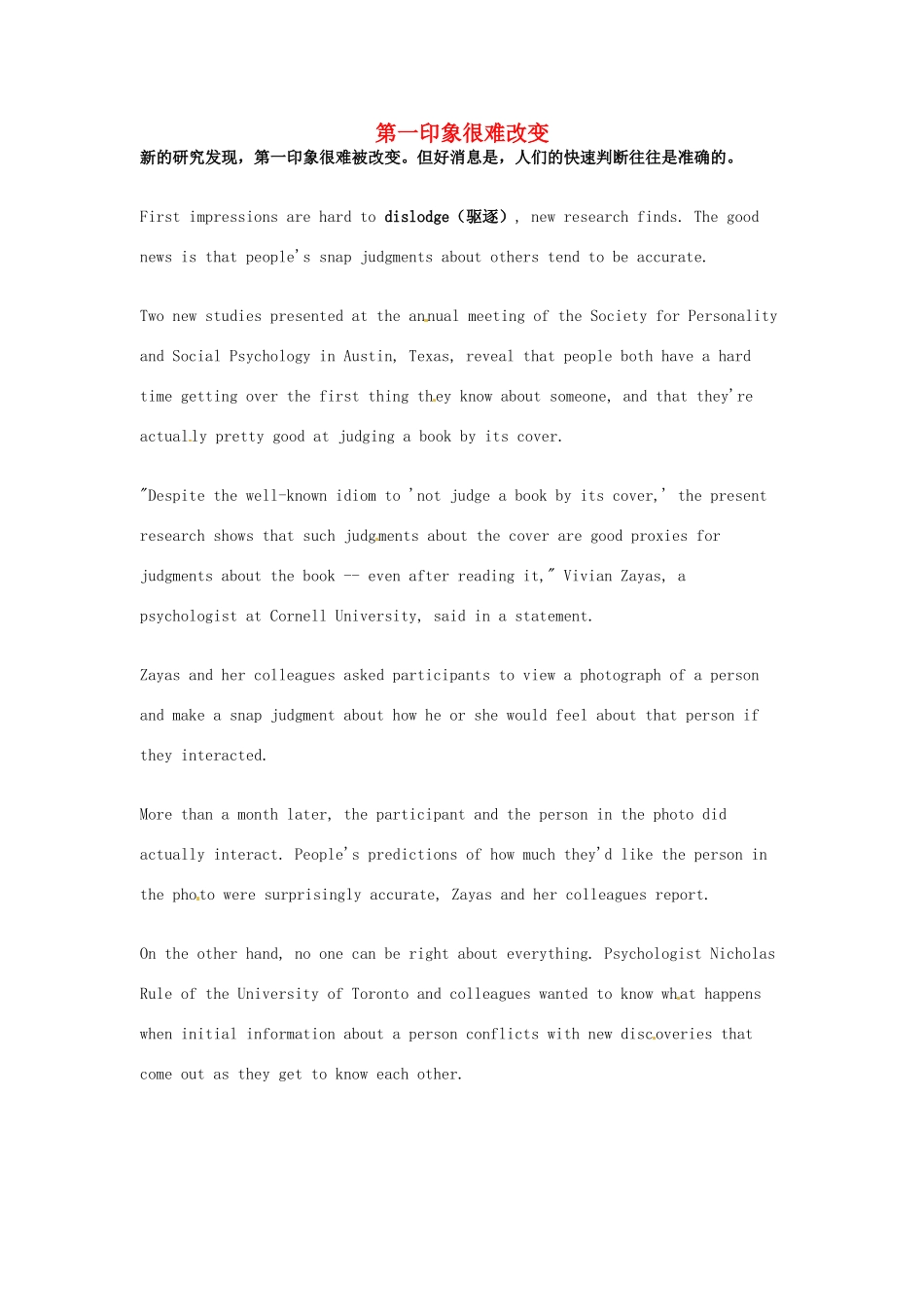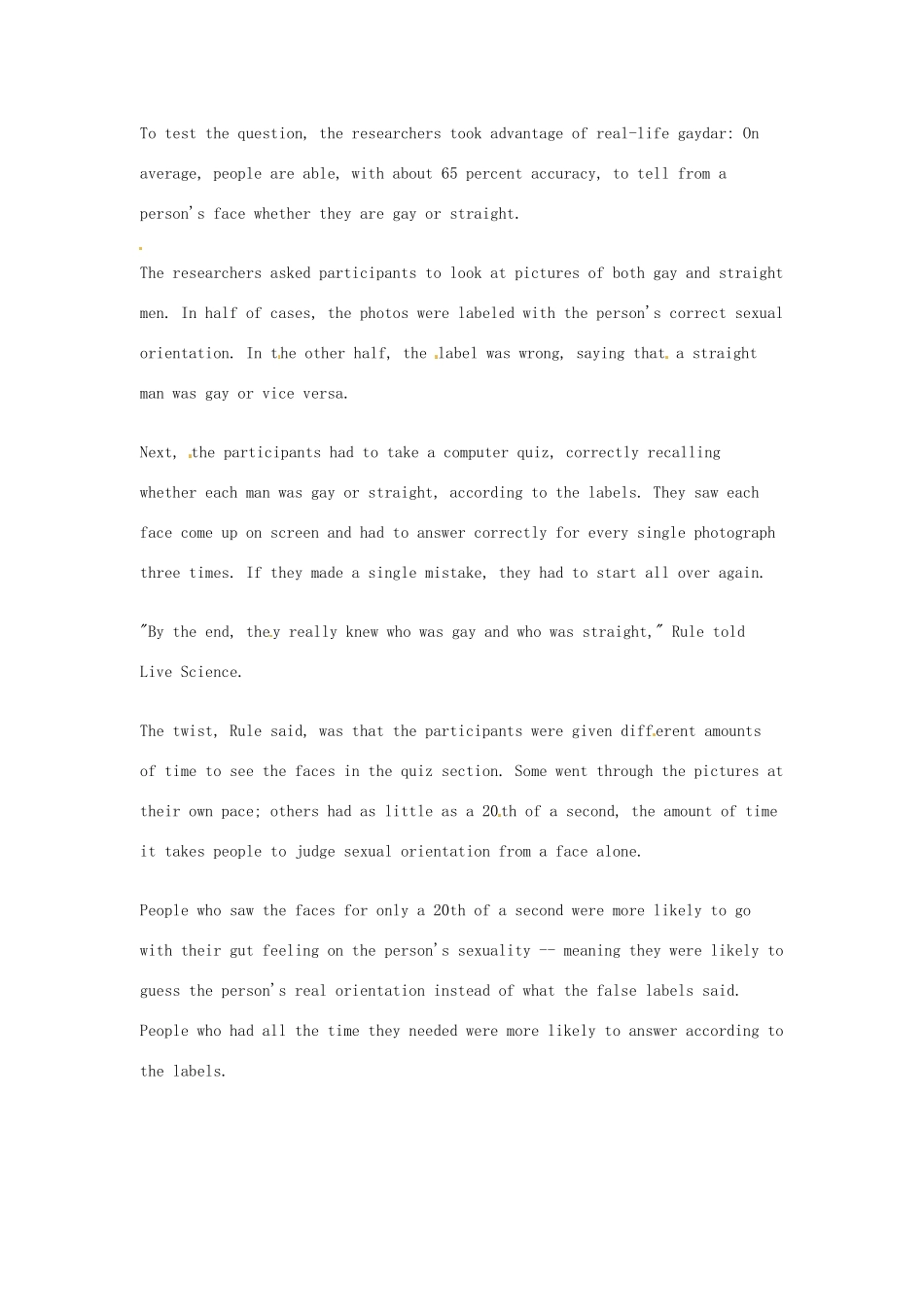第一印象很难改变新的研究发现,第一印象很难被改变。但好消息是,人们的快速判断往往是准确的。 First impressions are hard to dislodge(驱逐), new research finds. The good news is that people's snap judgments about others tend to be accurate. Two new studies presented at the annual meeting of the Society for Personality and Social Psychology in Austin, Texas, reveal that people both have a hard time getting over the first thing they know about someone, and that they're actually pretty good at judging a book by its cover. "Despite the well-known idiom to 'not judge a book by its cover,' the present research shows that such judgments about the cover are good proxies for judgments about the book -- even after reading it," Vivian Zayas, a psychologist at Cornell University, said in a statement. Zayas and her colleagues asked participants to view a photograph of a person and make a snap judgment about how he or she would feel about that person if they interacted. More than a month later, the participant and the person in the photo did actually interact. People's predictions of how much they'd like the person in the photo were surprisingly accurate, Zayas and her colleagues report. On the other hand, no one can be right about everything. Psychologist Nicholas Rule of the University of Toronto and colleagues wanted to know what happens when initial information about a person conflicts with new discoveries that come out as they get to know each other. To test the question, the researchers took advantage of real-life gaydar: On average, people are able, with about 65 percent accuracy, to tell from a person's face whether they are gay or straight. The researchers asked participants to look at pictures of both gay and straight men. In half of cases, the photos were labeled with the person's correct sexual orientation. In the other half, the label was wrong, saying that a straight man was gay or vice versa. Next, the participants had to take a computer quiz, correctly recalling whether each man was gay or straight, according to the labels. They saw each face come up on screen and had to answer correctly for every single photograph three times. If they made a single mistake, they had to start all over again. "By the end, they really knew who was gay and who was straight," Rule told Live Science. The twist, Rule said, was that the participants were given different amounts of time to see the faces in the quiz section. Some went through the pictures at their own pace; others had as little as a 20th of a second, the amount of time it takes people to judge sexual orientation from a face alone. People who saw the faces for only a 20th of a second were more likely to go with their gut feeling on the person's sexuality -- meaning they were likely to guess the person's real orientation instead of what the false labels said. People who had all the time they needed were more likely to answer according to the labels.

